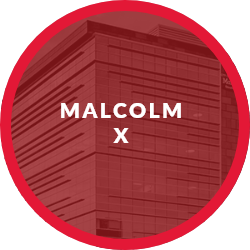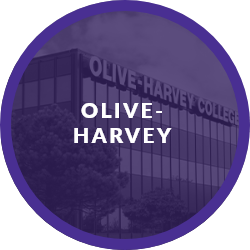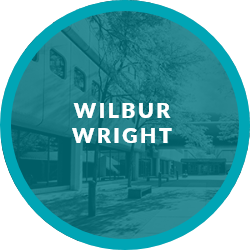Mission, Vision, and Values
Mission
Our mission dedicates us to deliver high-quality, innovative, affordable, and accessible educational opportunities and services that prepare students for a rapidly changing and diverse global economy.
Vision
Our vision guides us to enrich the quality of life of our students and the community we serve through creative responses to educational, economic, social and global changes.
Values
Our core values define us through integrity and commitment, responsibility and accountability, respect and fairness, and diversity and inclusiveness.
As a first-generation college student, I appreciated the small class sizes and the support I received on campus. The professors are amazing – they want to see you succeed.
Anaiza Cartagena
Truman College Alumna | Harry S Truman College 2020
As a first-generation college student, I appreciated the small class sizes and the support I received on campus. The professors are amazing – they want to see you succeed.
Anaiza Cartagena
Truman College Alumna | Harry S Truman College 2020
The Strategic Planning Process
In Spring 2019, Truman’s President created the Strategic Planning Committee (SPC) to develop an integrated approach to college-wide collaboration, engagement, creative thinking, and consensus building. Through a collaborative process, the SPC identified several areas of opportunities, or pillars, that would guide how Truman would work going forward:
Summary of Strategies
Six strategic levers form the framework for all of City Colleges’ plans. They serve as guiding principles and beliefs that are fundamental to the holistic success of our plans.

Goal: CREATE AN EXCEPTIONAL STUDENT EXPERIENCE
We promise that every experience with City Colleges, from pre-admissions to completion, will be exceptional. Every student will be able to maximize their learning inside and outside the classroom, navigate our institution with ease, make significant progress towards their goals, and feel welcome and supported by all City Colleges employees.
Goal: SIGNIFICANTLY NARROW ACHIEVEMENT GAPS
We will become a “student-ready” and equitable institution that is designed for all students to thrive—especially those from historically and present-day marginalized communities. We will equip students with the support and resources they need to succeed in the classroom and beyond.
Goal: RESPOND TO ECONOMIC NEEDS OF THE CITY
We will be forward-looking and agile in developing pathways and forging partnerships that unlock transformational career opportunities for CCC students and fuel the Chicago workforce with talent that is prepared to meet the needs of the economy.
Goal: BUILD A CULTURE OF EXCELLENCE
We will build a culture of excellence that inspires everyone to become the ‘best in class’ for our students and community. We hold ourselves accountable to delivering academics, experiences, and services of the highest quality. Our faculty and staff will continue to receive professional development across the district to continuously improve their practices.
Goal: CREATE A COLLABORATIVE AND CONNECTED ECOSYSTEM
We will create a more collaborative and connected ecosystem to foster coordination and communication that supports student success. At each college and across the district, we will implement people, data, and technology solutions to create holistic best practices with an inclusive approach to problem solving.
Goal: DEVELOP, MONITOR, AND IMPROVE CRITICAL INSTITUTIONAL HEALTH MEASURES
We will develop, monitor, and improve critical institutional health metrics that ensure financial sustainability and the wellbeing of our institution
Targets and Outcomes
City Colleges sets a range of outcomes for its goals in future years, consisting of a “target” that establishes the baseline for accountability and a “reach” that reflects its full ambition. The table below summarizes the targets through FY26 and outcomes through FY24. All figures are rounded to the nearest whole number.

Access

Momentum

Completion

Mobility
Student Experience










